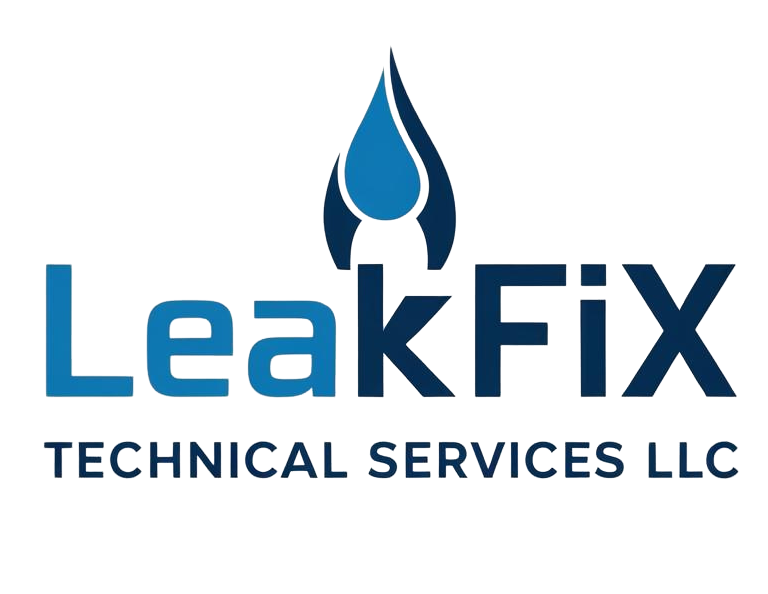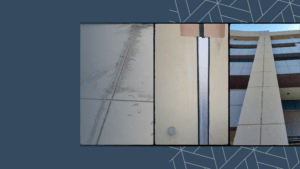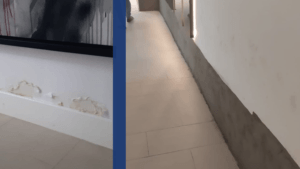Wall dampness represents an ongoing problem for homeowners because it causes structural damage and health issues while decreasing a home’s energy efficiency. Moisture trapped in walls can damage a house’s foundation while promoting mold growth and leading to higher utility bills because insulation becomes less effective. Protecting your home and creating a comfortable living environment requires knowledge about the causes and effects of wall dampness and available treatment solutions.
Understanding the Causes of Wall Dampness
An effective treatment strategy cannot begin until the primary cause of moisture has been identified. These are the main factors that lead to dampness in walls.
1. Water Infiltration
One of the primary causes of wall dampness is water infiltration. Wall dampness develops from multiple structural weaknesses, including:
Leaky Roofs: Rainwater penetrates walls when the roof sustains damage or lacks proper maintenance.
Clogged or Damaged Gutters: Broken or obstructed gutters lose their functionality to redirect rainwater, which results in water pooling near walls.
Cracks in Walls: Small openings or separations in exterior walls serve as entry points for moisture that eventually leads to major dampness problems.
2. High Humidity and Condensation
Inadequate air flow coupled with excessive indoor humidity creates wall condensation, resulting in ongoing dampness. Some common causes include:
Inadequate Air Circulation: Lack of proper ventilation in homes causes moisture to become trapped, which raises humidity levels.
Steam from Kitchens and Bathrooms: The steam from cooking and hot showers accumulates on walls, resulting in increased moisture levels.
Lack of Dehumidification: Homes located in humid climates need dehumidifiers to manage indoor moisture levels.
3. Poor Drainage System
Wall dampness can result from improper maintenance of your home’s drainage system. Common issues include:
Improper Grading: Rainwater pools near your home’s foundation when the ground slopes toward it instead of away from it, which leads to water seeping into the walls.
Blocked or Faulty Drains: When drainage systems become clogged, water cannot flow away, resulting in moisture accumulation around walls.
4. Structural Issues
Building structure defects such as cracks and gaps along with damaged waterproofing elements enable moisture to enter the building. Some factors include:
Aging Building Materials: The bricks, cement, and plaster materials lose strength as they age, which increases their ability to absorb water.
Damaged Waterproofing: Wall structures become vulnerable to water penetration when their waterproofing layer starts to break down.
Effects of Wall Dampness
Neglecting wall dampness will lead to multiple adverse outcomes. By learning about these effects, homeowners will understand the necessity of taking immediate action to implement effective solutions.
1. Structural Damage
- Continuous wall wetness results in structural cracks and progressive material degradation.
- Wooden door frames and window sills undergo rotting and decomposition due to dampness.
- Foundational damage becomes a serious concern when moisture reaches extensive areas.
2. Mold and Mildew Growth
- Excess moisture in environments allows mold and mildew to grow optimally.
- Mold destroys walls and ceilings while simultaneously releasing spores that lower air quality.
3. Health Issues
- When people come into contact with mold spores, it can result in respiratory problems along with allergies and asthma attacks.
- Elevated indoor humidity results in an indoor atmosphere that feels uncomfortable while posing health risks.
4. Reduced Energy Efficiency
- Moist walls impair a home’s insulation, which forces heating and cooling systems to operate at increased capacity.
- Higher utility bills result from increased energy consumption.
Comprehensive Wall Dampness Treatment Strategy
Homeowners need to implement a multi-step method that addresses wall dampness by treating both the visible problems and their root causes. Here’s a detailed treatment strategy:
1. Identify and Resolve the Cause
- Inspect your roof, gutters, and exterior walls to find any leaks, cracks, or drainage blockages that need attention.
- Repair your roof leaks, mend damaged gutters, and seal wall cracks to stop additional water entry.
2. Improve Ventilation
- Place exhaust fans in areas where moisture accumulates to protect kitchens and bathrooms.
- Rooms that experience high humidity levels require dehumidifiers to maintain appropriate moisture levels.
- Regular window openings help maintain fresh air flow and stop the formation of condensation.
3. Sealing and Waterproofing
- Protect exterior and interior walls with waterproof sealants to establish a moisture barrier.
- Protect your interior walls from moisture-related damage by using moisture-resistant paint or coatings.
4. Enhance Drainage System
- Modify the terrain around your house to ensure water runs away from your foundation.
- The proper functioning of gutters and downspouts requires consistent cleaning and maintenance to keep water flowing away from your house.
5. Address Structural Repairs
- Fortify the foundation and restore damaged waterproofing layers to stop additional water infiltration.
6. Mold Remediation
- Affected regions show mold development, which requires cleaning through anti-mold treatments.
- All mold-infested materials showing severe damage should be removed and replaced to stop another outbreak.
7. Routine Maintenance
- Perform routine inspections to detect initial moisture problems.
- Quickly deal with small moisture problems to stop them from becoming major issues.
Benefits of Comprehensive Wall Dampness Treatment
An efficient dampness treatment strategy delivers multiple benefits.
Preserves Structural Integrity: The home’s protection from decay helps homeowners avoid costly repair bills.
Prevents Mold Growth: Prevents mold growth so homes become healthier living spaces by removing mold-supporting conditions.
Enhances Indoor Air Quality: The treatment effectively decreases allergens and air pollutants that originate from moist environments.
Improves Energy Efficiency: By maintaining the insulation effectiveness homeowners achieve substantial savings in heating and cooling expenses.
Maintains Aesthetic Appeal: Blocks stains and prevents both paint peeling and discoloration to maintain attractive walls.
Conclusion
Untreated wall dampness leads to major structural damage and health problems while also driving up energy expenses. Effective moisture management through strategic and proactive methods is critical for keeping your home both safe and comfortable. Homeowners can effectively fight against dampness problems by finding root causes, improving air flow while sealing walls, guaranteeing proper water drainage, and conducting regular maintenance.
A complete moisture treatment plan protects your home while creating a healthier and energy-efficient space for your family.







2 Responses
I am extremely inspired together with your writing abilities and also with the format on your weblog.
Is that this a paid theme or did you customize it yourself?
Anyway keep up the nice quality writing, it’s
uncommon to look a nice blog like this one today.
Fiverr Affiliate!
I am really impressed with your writing skills and also with the structure on your blog. Is this a paid topic or did you modify it your self? Either way stay up the excellent quality writing, it’s rare to see a great blog like this one nowadays!